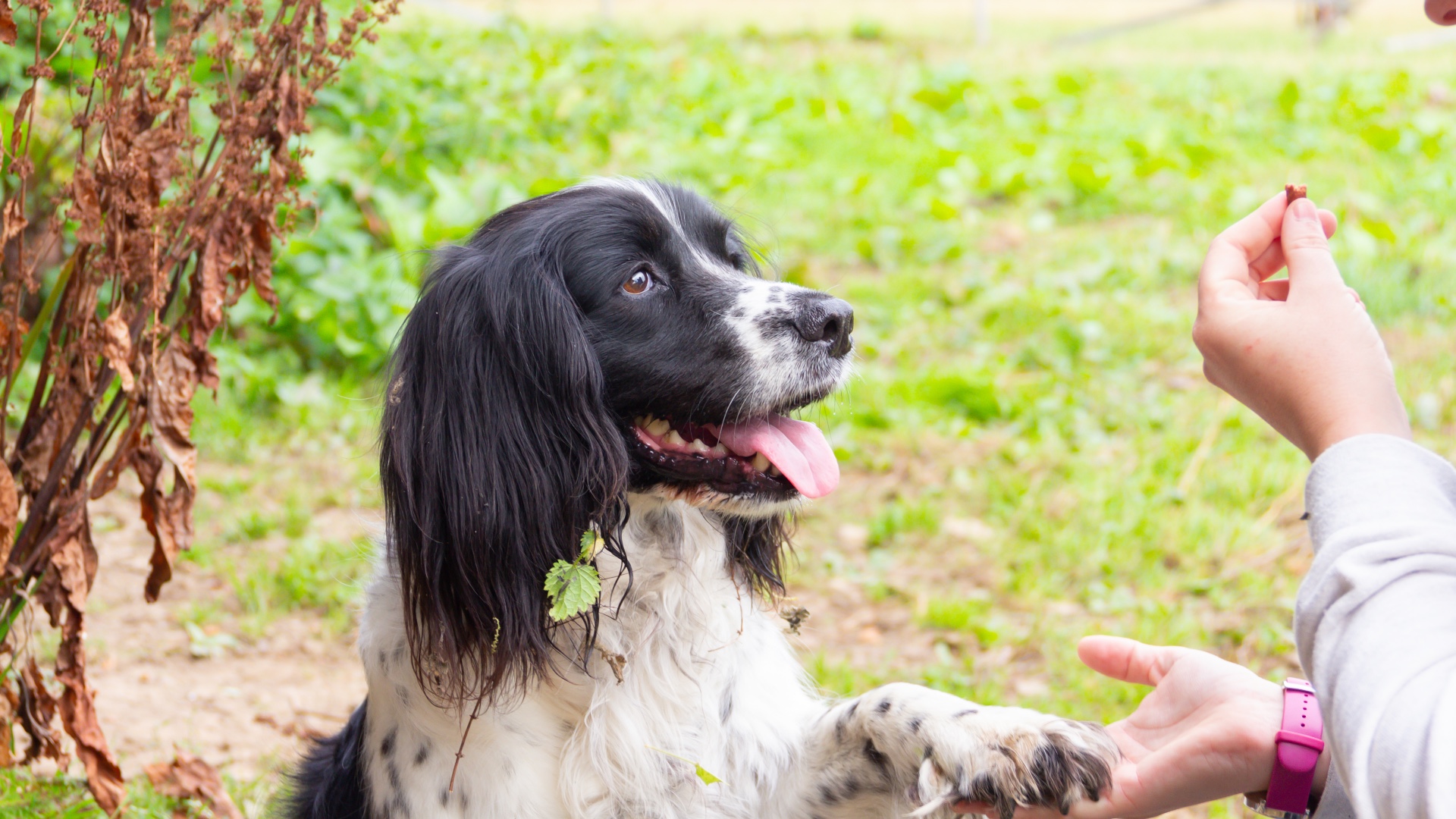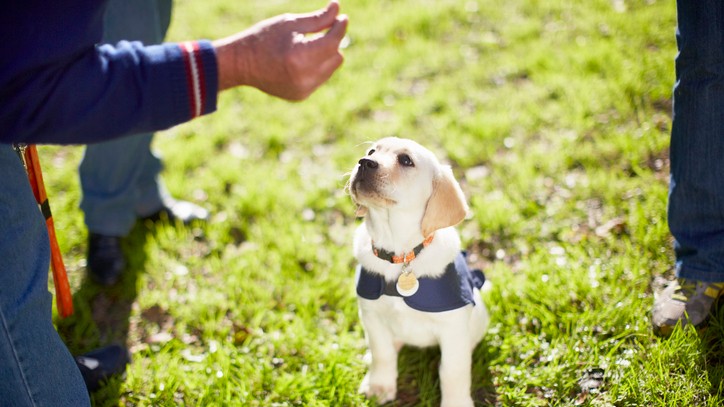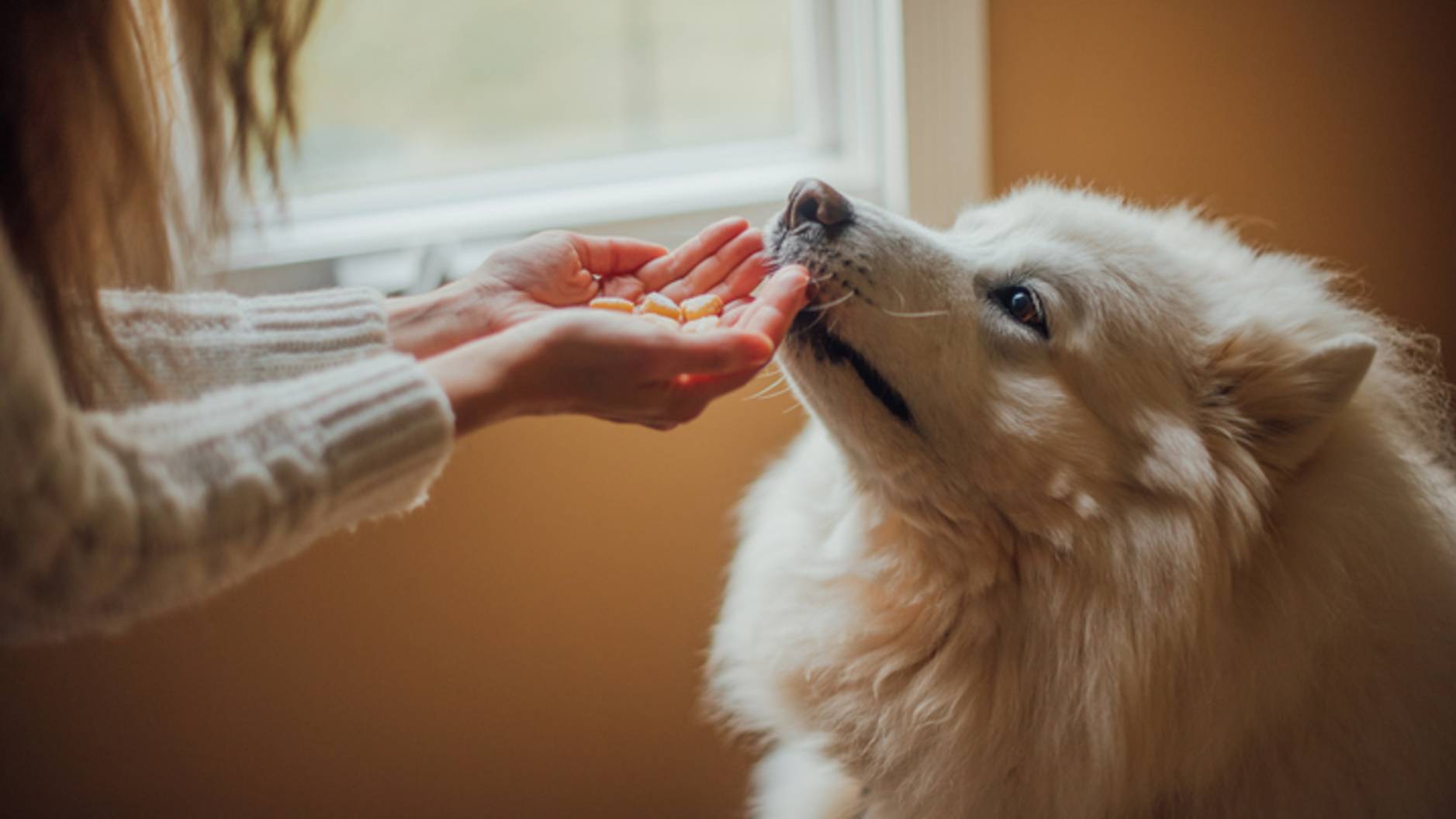Training dogs with treats: How to reinforce good behavior the right way
It may sound easy – trick then treat – but there is actually a distinct knack to training dogs with treats

Training dogs with treats treads a fine line between rewarding them for positive behavior and offering a tasty titbit as a bribe. The trick is to encourage a dog to understand that you’re trying to reinforce good behavior in a way that will get the best out of them, but just how do you achieve that?
The best way to think about training dogs with the best dog treats is to understand that they're being given a reward for a job well done. They put in the effort, they get a treat, then continue to put in the effort for more treats — in the same way that you work, get paid, and continue working for more money. Nobody is getting an advance on their wages here. Your dog isn’t going to be given a treat in the hope of putting in a good performance.
So arm yourself with a bag of delicious doggy treats and delve into the science behind positive reinforcement for dogs. We’re about to help make treat training a dog a walk in the park with a handy list of tips and tricks.
What is the best treat for training a dog?
The best treats for training are those that are small, easy to carry and quick for your dog to chew and swallow. It means you'll be able to keep up a higher rate of reinforcement and that will help your dog to stay motivated and on track.
To that end, opt for a common, low calorie treat for frequent use such as the 10 healthiest dog treats for training and go for a higher ‘value’ treat for extra special rewards or to revive interest in a flagging dog – perhaps even make your own homemade dog treats.
The more interesting treats may also come in handy if you’re training in an area rich in exciting smells and sights. It will keep the dog’s attention fixed on the task at hand.
How to train a dog with dog treats

To get the most of out your training, you want to make sure you know exactly how to train your dog with treats. Afterall, you don’t want to accidentally reward the wrong type of behavior!
Get the best advice, tips and top tech for your beloved Pets
Consider these handy tips to get the most out of your dog's training session:
1. Don't bring the treats out too early
Always keep treats in your pocket. If they are in plain sight of your pooch then it’s likely that they'll think they're about to get one ahead of achieving their task. Once a goal has been met, however, pull one out and reward them. Only if you are asking a dog to do something that you know they’ll find hard should you reward for half-a-job by way of encouraging them to master the behavior in its entirety.
2. Remove distractions
Where you train is important so locate yourself somewhere where your dog is unlikely to become distracted. For example, if you have a decent sized backyard, you might practice walking them on a lead around that area first before you try taking them to the local park.
Similarly, you may wish to desensitize them to certain loud sounds by playing a quiet recording of those sounds at home before you take them out into the real world where those sounds will be present.
3. Reward your dog promptly

A dog must be able to associate a treat with an action – especially so when introducing a new command. And don’t give a treat to a dog displaying unwanted behavior, such as jumping up in excitement because this will reinforce the wrong ideas.
4. Use verbal encouragement
There are debates surrounding training a dog without treats vs training with treats and there’s a lot to be said for verbal encouragement. Most dogs will respond really well to praise so use both to get the best results. Dish out the treat and say 'good boy' or 'good girl' in an enthusiastic voice. This will energize them and make it more likely that the positive behavior will be repeated.
5. Hold the treat close to your dog's nose
Treats can be used as a guide for a few commands, such as sitting, laying down, and rolling over. Hold the treat close to your standing dog’s nose, and raise it up and back toward their ears. The dog will naturally raise their head to follow it, and their haunches will lower toward the ground.
Let them have the treat when they’ve assumed the sitting position, all the while repeating the command. They’ll get the idea pretty quickly, and the treat makes it more fun for the dog, making them more likely to learn faster.
6. Consider a clicker

Once the desired behavior is well ingrained in your dog, and they reliably perform it on command, you can begin to phase out the treats, not giving them every time and eventually not giving them at all.
A clicker can come in handy to keep the reinforcement going without feeding, but even if there are no treats coming, just a bit of fuss and attention, the dog will not stop performing the desired actions.
7. Never bribe your dog
We mentioned the dangers of bribing dogs earlier but what is the difference between a reward and a bribe? When you dish out a treat as a reward, you're only revealing the treat once your dog has done what you want them to do. They do what you ask without knowing whether there's going to be a treat in it for them and then are pleasantly surprised when they do get positive reinforcement in the form of food.
A bribe, on the other hand, is when your dog won't do what you're asking them to do and you show them a piece of food in order to get them to complete the task. We strongly encourage you to never use treats in this way as your pup will likely start refusing to do anything you ask them to do unless they see the food first, which is something you definitely don't want!
So there you go. That is how you go about training dogs with treats. Don’t forget, it’s important to reward dogs with something they enjoy so look for the best puppy treats and get stuck in.
- David CrookesFreelance writer
